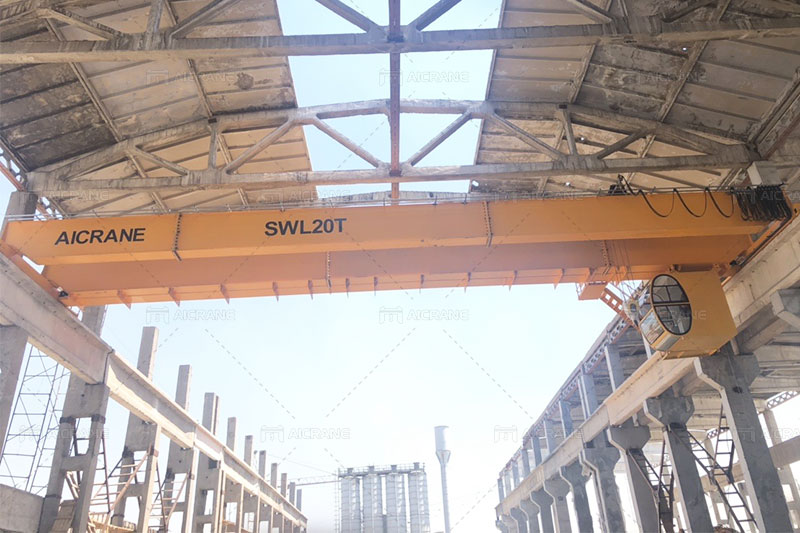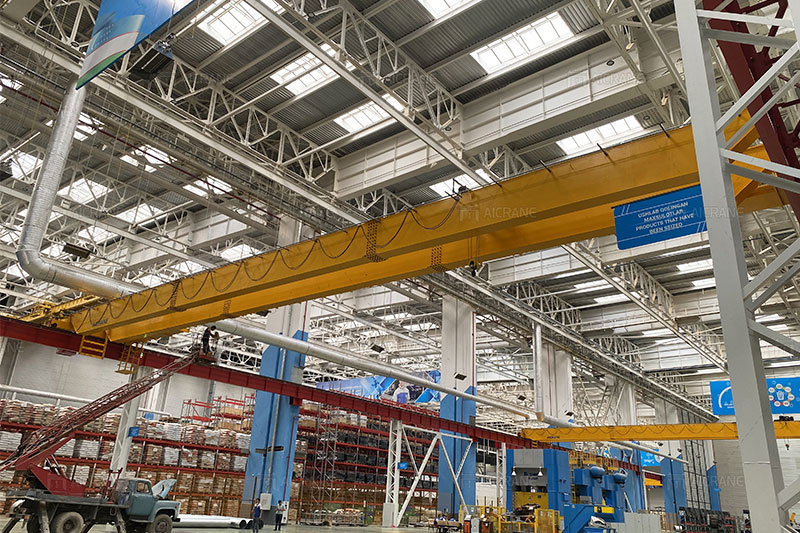Overhead bridge cranes are an essential component of material handling operations in various industries, including manufacturing, warehousing, construction, and shipping. These cranes provide an efficient and safe solution for lifting and transporting heavy loads. However, for businesses considering the installation of an overhead bridge crane, understanding the associated costs is crucial for proper budgeting and decision-making.
In this article, we’ll break down the key factors that influence the overall cost of installing an overhead bridge crane, helping businesses make informed choices and ensure the success of their investment.

1. Crane Type and Configuration
The first and most significant factor influencing the cost of an overhead bridge crane installation is the type and configuration of the crane itself. Overhead bridge cranes come in various types, each designed to meet specific lifting needs. The most common configurations include:
- Single Girder Cranes: These cranes consist of one main girder running across the span. They are generally more cost-effective than double girder cranes because they require fewer components and less structural support. However, they are typically limited in terms of capacity (generally up to 20 tons) and lifting height.
- Double Girder Cranes: Featuring two main girders, Aicrane double girder overhead cranes offer higher lifting capacities and greater lifting heights. They also allow for the installation of a hoist on top of the girders, maximizing headroom. While more expensive, double girder cranes are ideal for heavy-duty applications and larger industrial facilities.
- Top-Running Cranes: A top-running bridge crane operates on rails mounted on top of the runway beams. These cranes offer greater lifting capacities and can span larger distances but require robust structural support, increasing the installation cost.
- Underhung Cranes: Underhung or underslung bridge cranes run on tracks mounted on the bottom of the runway beams. These cranes are generally more economical to install and are ideal for facilities with limited overhead space.
The type of crane chosen, including its lifting capacity, span, and specific features, plays a significant role in determining the cost of installation.

2. Structural Modifications
Installing an overhead bridge crane may require significant structural modifications to the building. The crane’s weight, along with the loads it will be lifting, needs to be adequately supported by the building’s infrastructure. Depending on the condition and design of the facility, businesses may need to invest in structural reinforcements, such as:
- Strengthening columns and beams: If the building’s existing structure cannot support the weight of the crane and its load, reinforcement will be necessary, adding to the overhead crane cost.
- Installing crane runways: Crane runways, which are the tracks on which the crane travels, must be securely installed. In many cases, this requires the installation of additional steel beams or columns to support the runways.
- Modifying ceiling height: If the facility’s ceiling height is insufficient to accommodate the crane and allow for safe load lifting, the ceiling may need to be raised or modified, which can be an expensive and complex undertaking.
Structural modifications can substantially increase the cost of overhead bridge crane installation, so it’s important to conduct a thorough assessment of the building’s infrastructure before proceeding.
3. Electrical and Mechanical Systems
Overhead bridge cranes rely on electrical and mechanical systems for operation. The complexity and scope of these systems will influence the overall installation cost. Key considerations include:
- Electrical Wiring and Controls: The crane will require electrical power, which means running electrical wiring from the power source to the crane’s location. Depending on the size of the facility and the location of power sources, this can be a straightforward or complicated process.
- Control Systems: Many modern overhead cranes come equipped with advanced control systems, including remote control options, variable speed drives, and anti-sway mechanisms. While these features enhance safety and efficiency, they can increase installation costs due to the complexity of the control system integration.
- Hoist and Trolley Mechanisms: The cost of the hoist and trolley mechanisms, which lift and transport loads along the crane’s span, will vary depending on the crane’s capacity and the technology used. For example, electric chain hoists tend to be more affordable than wire rope hoists, but the latter offers higher capacities and smoother operation.
The installation of electrical and mechanical systems should be carried out by certified professionals to ensure safety and compliance with industry standards, which will further influence the cost.
4. Installation Labor Costs
Labor is a significant factor in the total cost of installing an overhead eot crane. The complexity of the installation, the number of skilled workers required, and the time it takes to complete the project will all contribute to the overall expense.
- Specialized Labor: Installing an overhead bridge crane is a specialized task that requires experienced engineers, electricians, and crane technicians. The cost of hiring these professionals will depend on their location, expertise, and the complexity of the project.
- Time Requirements: The length of time it takes to complete the installation will also impact the labor costs. Large, complex cranes with multiple components, such as double girder cranes, may take longer to install than simpler, smaller models.
In some cases, the installation may require additional downtime for the facility, resulting in lost productivity. This should be factored into the overall cost analysis.
5. Inspection and Certification
Once the crane has been installed, it must undergo inspection and certification to ensure compliance with local safety standards and regulations. The cost of this process includes fees for third-party inspections, load testing, and obtaining necessary permits. The crane must pass these inspections before it can be put into operation.
Regular inspections and maintenance are also required to keep the crane operating safely and efficiently. While these are ongoing costs, they should be considered part of the overall investment in the crane’s installation.
6. Training and After-Sales Support
Training employees to operate the overhead bridge crane is a critical step in ensuring the safety and efficiency of your material handling operations. Depending on the complexity of the crane and the level of experience of the operators, businesses may need to invest in comprehensive training programs.
Many crane manufacturers or suppliers offer training services, either as part of the crane purchase or at an additional cost. After-sales support, including maintenance contracts and technical assistance, can also add to the overall cost but provide long-term value by extending the crane’s lifespan and minimizing downtime.
7. Conclusion: Balancing Cost and Value
While the upfront costs of installing an overhead bridge crane can be significant, it’s essential to consider the long-term benefits and value that the crane will bring to your operations. A well-designed and properly installed overhead crane can improve productivity, enhance safety, and reduce operational costs over time.
By understanding the factors that influence installation costs—including crane type, structural modifications, electrical systems, labor, and certification—businesses can make informed decisions and ensure they get the best return on their investment. Investing in high-quality equipment and professional installation will ultimately lead to more efficient material handling and a more productive work environment.